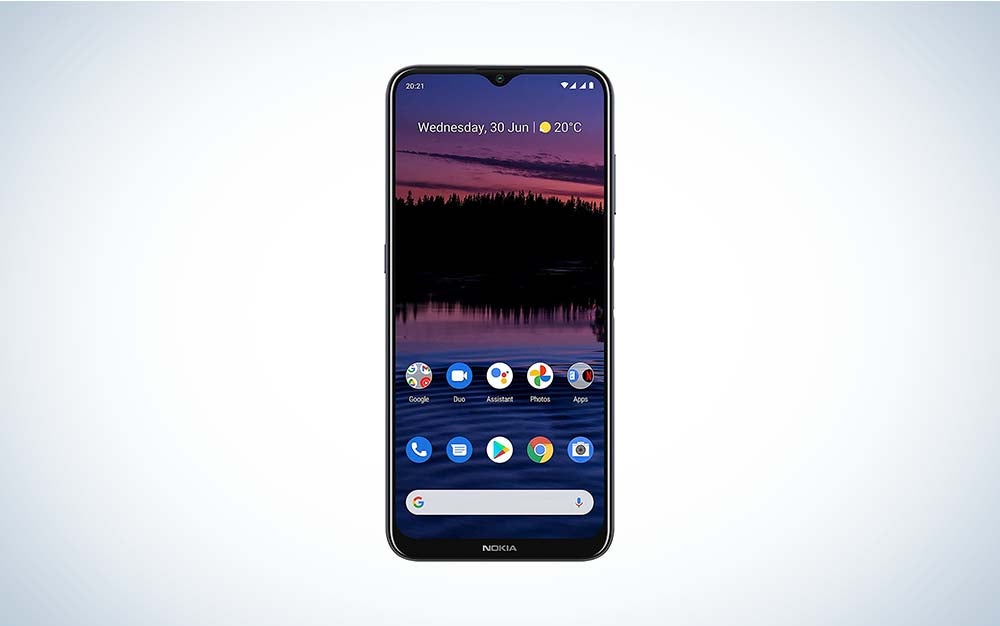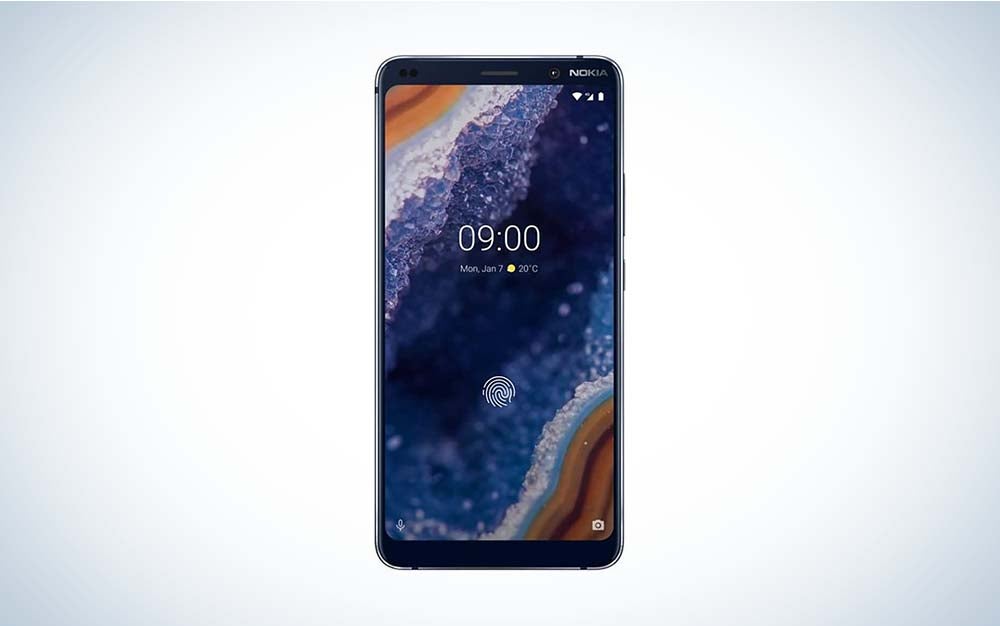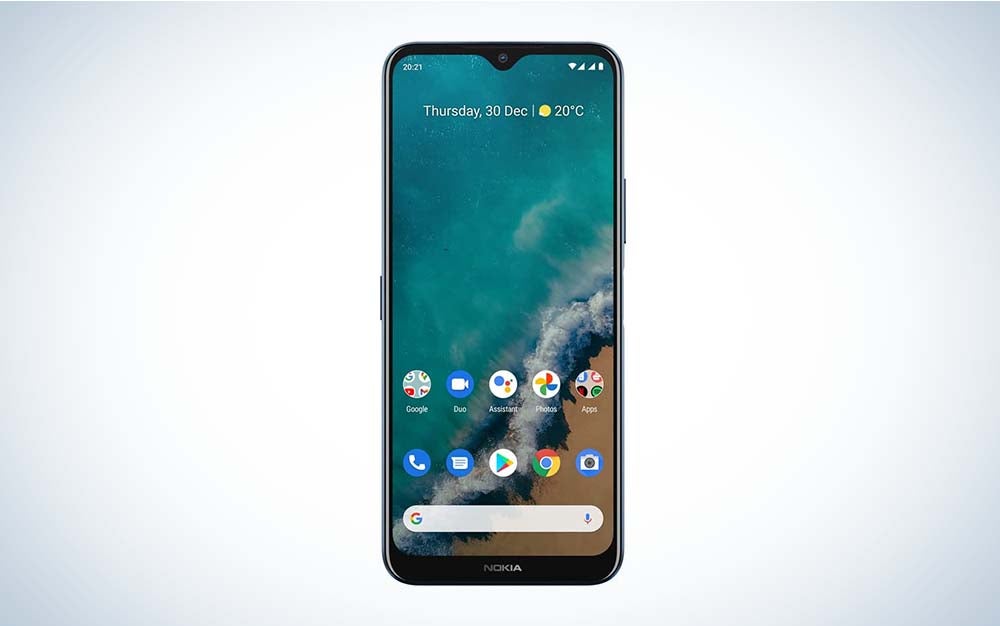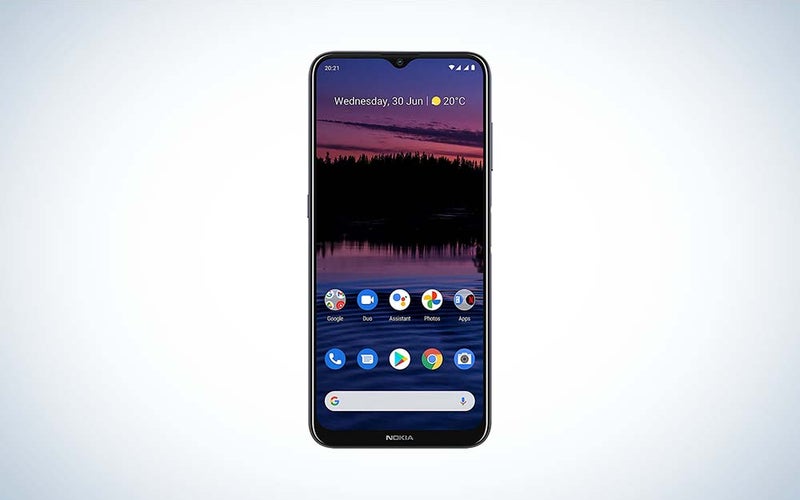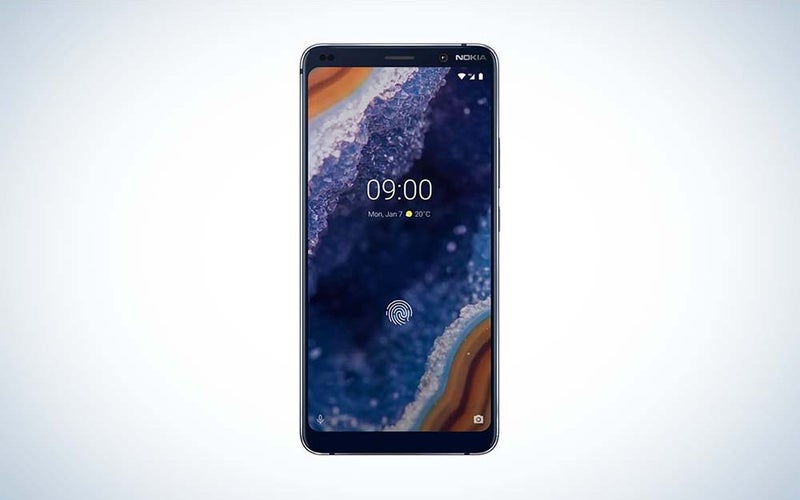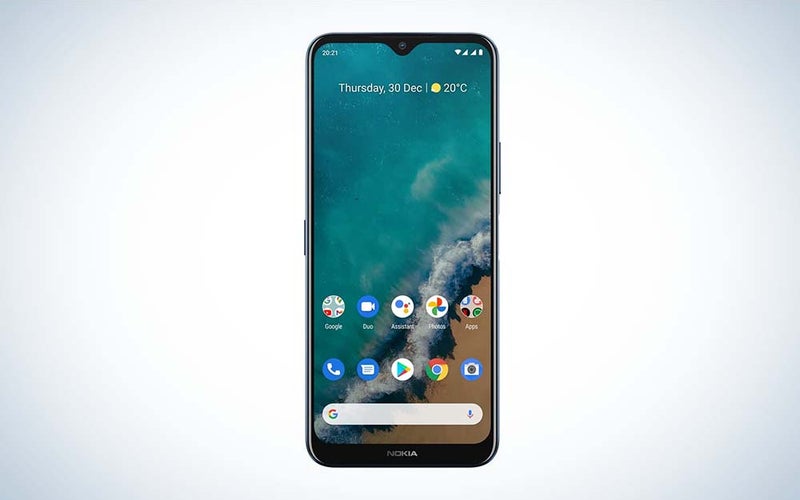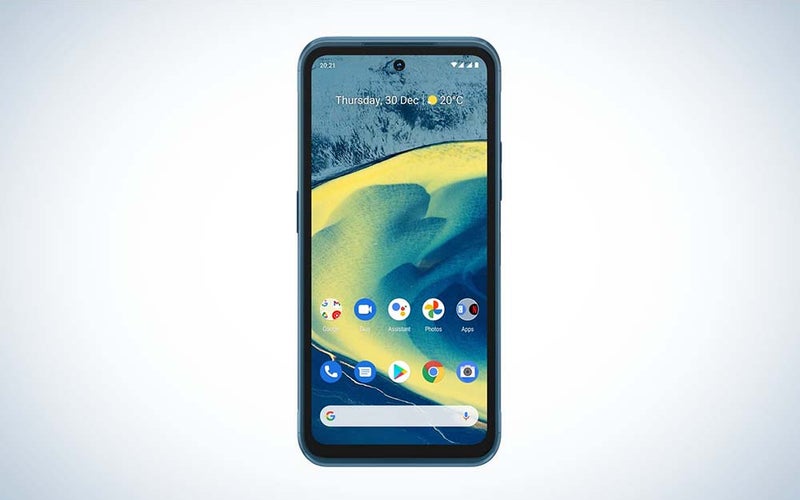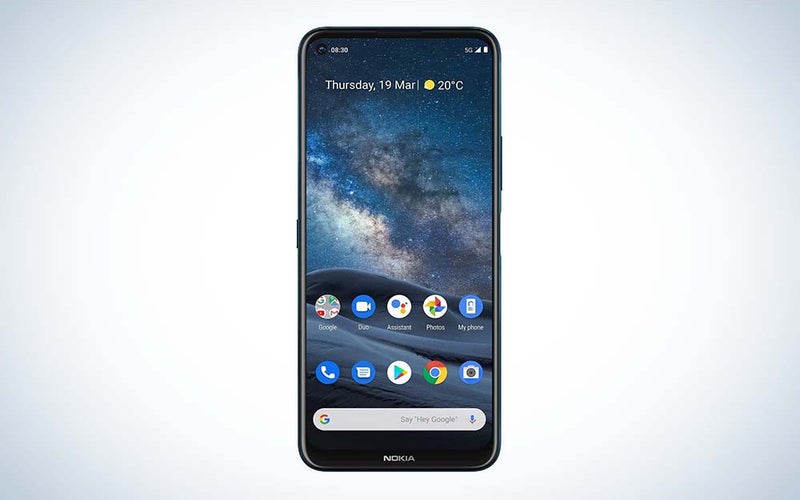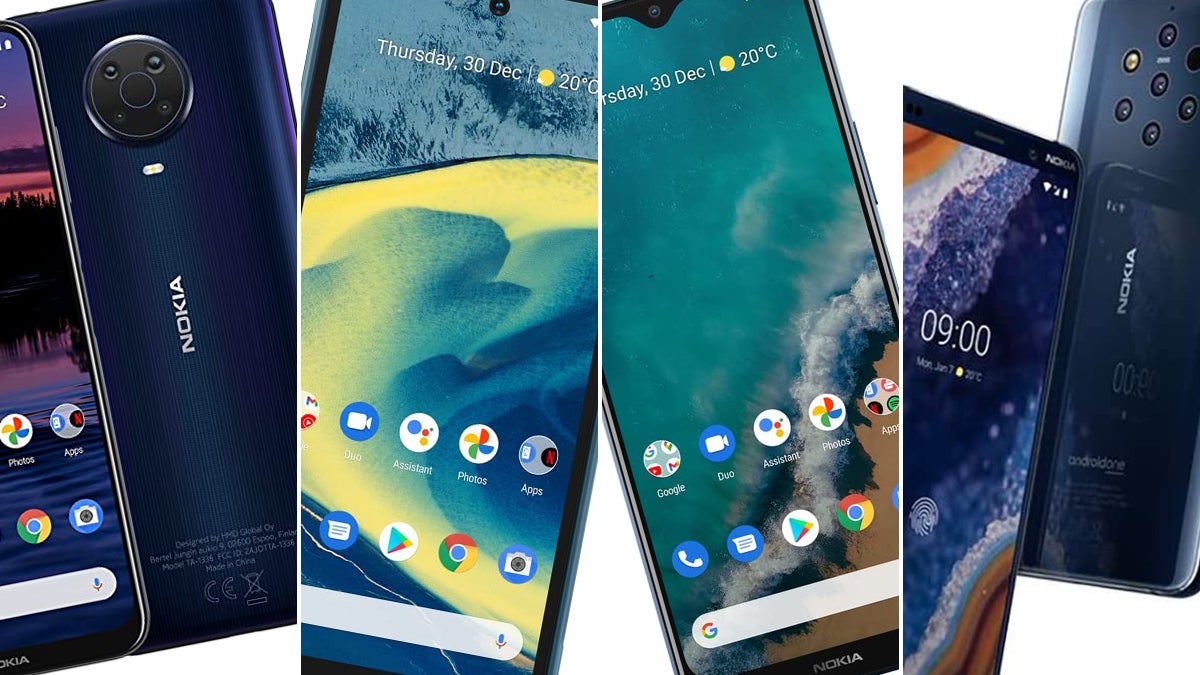
It wasn’t that long ago that Nokia was the leading phone manufacturer in the world and churned out some popular Nokia phones. But then along came Apple, Google, Samsung, and dozens of small independent manufacturers, such as Xiaomi and OnePlus, making it a very tough market to break into and survive in.
It may have been a while since Nokia released a phone that everyone desperately wanted, such as the infamous Nokia 3310, but that does not mean that its phones are in any way poor or not worth your consideration. On the contrary, the best Nokia phones will give you plenty of quality and features at a more budget-friendly price than more prominent brands.
- Best overall: Nokia G20
- Best camera: Nokia 9 PureView
- Best battery: Nokia G50
- Long lasting: Nokia XR20
- Best budget: Nokia 8.3
How we picked the best Nokia phones
The team at PopPhoto has decades of experience in a variety of photographic and technological situations. We reviewed all the available phones that Nokia makes to compile the above list of phones. We considered essential specs like RAM, processor, screen technology, and storage. Lastly, as many choose smartphones to have a camera in hand at all times, we aimed to select products with quality cameras.
Our focus was on those who want the best but may have a limited budget or don’t want to spend a fortune on a phone. The above list offers a range of budget-friendly phones that do an excellent job on a day-to-day basis.
The best Nokia phones: Reviews & Recommendations
Best overall: Nokia G20
Nokia
Why it made the cut: While all Nokia phones are aimed at a lower budget target audience, the quality of the G20 still makes it feel like it’s at the higher end of the mid-range market.
Key features:
- Processor: Mediatek Helio G35
- RAM: 4GB
- Screen: 6.65 inch HD+
- Cameras: Rear: 48MP main camera, 5MP ultra-wide angle & 2MP macro | Front: 8MP
- Storage: 64GB (expandable up to 512GB)
- Battery: 5050mAh and 10W charging
Pros
- Large battery
- Expandable storage
- Stylish design
- 3.5mm headphone jack
Cons
- Slow processor and RAM
The Nokia G20 is a very stylish-looking phone with beautiful curves that make the phone seem like a smooth pebble. The front camera is small and discreet, while the rear camera arrangement is a circle at the top of the phone that looks strangely like a Tardigrade’s mouth.
Another great feature that has unfortunately become absent from phones in recent years is the 3.5mm headphone jack. Granted, many people use wireless headphones and earbuds now, but the option to use wired headphones is a welcome one.
Expandable storage is another feature that has more or less become extinct. It can be frustrating having to pay significantly more to get double the storage, so it’s great to see that Nokia is one of the few manufacturers keeping this option. The G20 can expand up to 512GB, which is on top of the 64GB it already has.
Considering that this is a very affordable phone, it is somewhat surprising to see a 5050mAh battery inside it, which means the phone can last longer when you need it. While 10W charging isn’t considered fast charging these days, given we now have 120W charging, it is still very decent and, again, considering the low price, is a welcome addition.
The processor and 4GB RAM aren’t the best in Nokia’s lineup, and at least on paper, it will be a slower phone. But most casual users will not notice. However, if you have a need for speed, then perhaps consider another Nokia phone.
Best camera: Nokia 9 PureView
Nokia
Why it made the cut: The Nokia 9 PureView has a unique, five-camera setup that results in better color and depth thanks to three of the cameras capturing in black and white, allowing it to retain more detail.
Key features:
- Processor: Snapdragon 845
- RAM: 6GB
- Screen: 5.99 inch QHD 2k OLED
- Camera: Rear: five 12MP cameras (2 in color, 3 in monochrome) | Front: 20MP
- Storage: 128GB
- Battery: 3320mAh
Pros
- Unique five-camera set up
- Decent processor and RAM
- Large storage
- Affordable price
Cons
- Small battery
Remember when phones didn’t even have cameras, much less five of them? These days, most phones that employ multiple cameras provide different focal lengths for multiple fields of view. The Nokia 9 PureView, however, has a different reason for the five 12 MP cameras, all of which have a 28mm fixed-focal length. Instead, the five-camera array has two (the centermost and central bottom) full-color cameras, and three are in black and white. The combination of color and monochrome cameras allows the phone to capture the full spectrum of light and gives you better photo quality.
The method that the camera produces an image requires fast processing. And as a result, the processor, while an older Qualcomm processor, is a reasonably fast one. Combined with the 6GB RAM, the Nokia 9 PureView is a fast device that can do everything you need. Moreover, it comes with 128GB storage as standard, which is more than enough for everyday users.
The screen itself isn’t the largest compared to other phones these days, but 5.99 inches is more than reasonable, and when you consider the affordable cost, this is a great size.
The biggest downside to this phone, considering that it gives you a fast processor, large storage, and a great camera setup, is that the battery is only 3320mAh. It will still last approximately 10 hours on paper, but it’s not a lot if you use your phone throughout the day.
Best battery: Nokia G50
Nokia
Why it made the cut: The impressive 5000mAh battery with 18W fast charging means you will rarely get caught with a dead battery, meaning you can use your phone without fear.
Key features:
- Processor: Snapdragon™ 480 5G
- RAM: 4GB
- Screen: 6.82 inch HD+
- Camera: Rear: 48MP main camera, 5MP ultra-wide angle, and 2-megapixel depth sensor | Front: 8MP
- Storage: 64GB/128GB (expandable up to 512GB)
- Battery: 5000mAh and 18W fast charging
Pros
- Large battery and fast charging
- Great camera arrangement on rear of the phone
- Expandable storage
- Stylish design
Cons
- Not the best screen
Released in 2021, the G50 is one of Nokia’s most recent phones. It has a very affordable price, like all current Nokia phones. Despite its reasonable cost, the Nokia G50 still has some fantastic features that give you more bang for your buck.
For example, Nokia included a 5000mAh battery giving you more time to use your phone between charges. However, if you do find yourself running low on battery, the 18W fast charging capabilities can charge your phone in less than an hour.
The phone comes in two storage options, 64GB and 128GB. There is also an option to expand storage to 512GB. It’s frustrating to see manufacturers move away from expandable storage as it is far cheaper to get a microSD card to expand your storage than paying for larger integrated storage. So it’s great to see Nokia keeping hold of this tradition.
With the Nokia G50, you get two cameras, a 48MP primary camera, and a 5MP ultra-wide-angle camera. It’s nothing groundbreaking, but they do a decent job and give you good quality when taking photos of your family and friends.
Sadly, the screen is not great. Surprisingly, this phone has some high-end features but loses out on a low-quality screen. That is to say that it is low quality by today’s standards. However, it is still decent enough to get by, especially if you aren’t using the phone for watching movies or editing photos.
Long lasting: Nokia XR20
Nokia
Why it made the cut: It’s a beautiful phone designed and tested to military-grade standards, giving you something close to the legendary Nokia 3310.
Key features:
- Processor: Snapdragon™ 480
- RAM: 6GB
- Screen: 6.67 inch FHD+
- Camera: Rear: 48MP main camera, 13MP ultra-wide-angle camera | Front: 8MP
- Storage: 128GB (expandable up to 512GB)
- Battery: 4630mAh
Pros
- IP68 rated
- Rugged and durable
- Attractive design
Cons
- Average processor
The Nokia 3310 is infamous in the phone industry for being the toughest, meanest phone ever made. People have reported throwing it, stepping on it, even setting it on fire, and the crazy little phone carries on working like it was nothing.
It’s been many a year since Nokia released anything similar to this level of indestructibility. While the Nokia XR20 isn’t as indestructible as the 3310 (simply because modern technology is more fragile), it is a beast in its own right.
The XR20 was designed and tested to MIL-STD-810H rating. That rating means that it is a military-grade phone and can withstand temperatures as low as -13°F and as high as 131°F. In addition, it’s IP68 rated, so it is dust, dirt, and sand resistant and can be submerged up to 4.9 feet underwater for an incredible 30 minutes. So if you need to make a call while it’s raining, or you drop it in the mud and need to wash it, you won’t need to worry much about damaging it.
It can also withstand drops up to 5.9 feet. If you are concerned about dropping it in general, then there’s an accessory attachment loop (another helpful feature of a bygone era) where you can add a loop to wrap around your wrist. Finally, if the above doesn’t convince you how durable this phone is, the screen is made from Gorilla™ Glass Victus™, which is the toughest screen Nokia has ever used on its phones.
In the photography industry, a weatherproof compact camera is well protected and durable but usually looks incredibly ugly. That is not the case with the Nokia XR20. It is, simply put, beautiful. The two cameras are arranged at the back in a simple square but with an “X” shape that connects the cameras, light, and sensor, which is very aesthetically pleasing.
The 48MP main camera and 13MP ultra-wide-angle cameras are standard Nokia cameras with lenses made by Zeiss. It’s not outstanding, but it’s not terrible either. The 4630mAh battery is decent enough and will last the better part of the day on paper.
The processor is rather average, though, which is surprising considering the 6GB of RAM. It’s not the worst, by any means, but it feels like a bit of an oversight given the specs the rest of the phone has.
Best budget: Nokia 8.3
Nokia
Why it made the cut: This phone came out in 2020 but still has some fantastic features and specs, giving you a great phone at a highly affordable price.
Key features:
- Processor: Snapdragon™ 765G
- RAM: 6GB/8GB
- Screen: 6.81 inch FHD+
- Camera: Rear: 64MP main camera, 12MP ultra-wide-angle, 2MP macro | Front: 24MP
- Storage: 128GB (expandable up to 512GB)
- Battery: 4500mAh and 18W fast charging
Pros
- 3.5mm headphone jack
- Large battery and fast charging
- Dual SIM
- Striking design
Cons
- Inconvenient Google Assistant button
Nokia released its 8.3 in September 2020, so it’s a fairly old phone by today’s standards. That said, this phone is still very good and worth considering if you are on a budget.
It comes with a Snapdragon™ 765G processor, which isn’t the fastest Qualcomm makes but is more than enough for everyday use. And when paired with the 6GB or 8GB RAM, the phone does a good job handling all your needs.
Overall, the phone is rather stunning with its two-tone gradient back. The rear camera arrangement doesn’t take up much space, so looks rather striking. The front camera is in the top left corner rather than centrally located, which may be an issue for some. It feels good to hold in your hand, although with a 6.81-inch screen, it’s not the smallest of phones.
The 68MP main camera is good enough for most users. Keep in mind, however, that as a budget phone, it will not provide groundbreaking quality by any means. The battery is 4500mAh and comes with 18W fast charging, which is a welcome surprise as you don’t often see a large battery and fast charging on a budget phone. It should reliably last a day, depending on your use.
Like most Nokia phones, you get the inclusion of a 3.5mm headphone jack. A headphone jack is handy, even if you do not use it very often, as it’s great to have a backup in case your wireless headphones/earbuds run out of juice. However, one thing that is not as useful is the inclusion of a Google Assistant button on the left side of the phone. It’s not in the best location and can result in accidental requests for Google Assistant’s help, which pauses your music or movie and becomes an inconvenience. You can turn this feature off, but you cannot remap it to something else, so it just becomes a useless button.
Things to consider before buying the best Nokia phones
Looking for a new phone can be overwhelming. Even within the Nokia brand, there are many different models offering different features and specs. But, one thing that all Nokia phones have in common is that they run on an Android user interface. So while there are many other decisions to make, you won’t have to decide on a UI. Read on to learn what you should consider when choosing a new Nokia phone.
Processor
The processor is what controls the phone. A faster processor means it can handle instructions and information better and quicker. If you are someone that opens multiple apps, watches movies a lot, and/or plays games on their phone then a faster processor is ideal. In addition to this, the more cores (or processing units) that a processor has the less energy it uses and the cooler it will be to hold.
RAM
The RAM, or Random Access Memory, is how much data the phone can handle. One example of what RAM, denoted by a higher GB, does is it helps store your current activities in short-term memory banks that let you pick up where you left off. So the more RAM you have, the faster you can access that information, which is perfect if you jump from app to app, activity to activity. Your phone will feel much faster if you get one with more RAM.
Camera
Most people want a phone with a decent camera as a minimum. Premium phones will focus on advanced features like night modes, portraits with shallow depth of field, or long exposures. But the Nokia range will suit you fine if you are not that interested in fancy camera tools and want a phone camera that just takes sharp photos. Most of them will have a wide-angle and ultra-wide-angle lens so that you can take pictures of groups or landscapes during your travels.
In terms of quality, the more megapixels the camera has, in theory, the better the quality. While this doesn’t tell the full story, as many factors affect a camera’s abilities, such as AI and the quality of the hardware, it gives you a rough indication of the camera’s potential.
Battery
One other thing that old phones have over modern smartphones is battery life. An older phone, such as the Nokia 3310, uses far less power to operate. Most people would only use those phones to call and text and maybe play Snakes (remember that classic game?). However, these days people use their phones for all sorts of functions, which requires much more battery power.
Battery charge is measured in milliampere-hour (mAh), and the higher the number, the longer that battery will last, on paper at least. Keep in mind that external power banks are relatively small and affordable, allowing you to charge your phone on the go. So battery charge these days is more a matter of convenience than a deal or no deal feature.
Storage
The more storage the phone has, the more apps, photos, and other data you can keep on it. If you are not planning on playing games or downloading dozens of apps, smaller storage, such as 64GB, should be okay. However, almost everything nowadays requires an app, which quickly eats up storage space. So, if possible, it is worth going for a higher storage capacity.
Screen size
Screen size is important to consider because of how it will feel in your hand and pocket. The 3310 was tiny, and you could easily work it with one hand, but the same cannot be said for some modern phones. While a larger screen is more beneficial for watching media on your phone, larger phones can be cumbersome. So unless you know you’ll be using the phone primarily for consuming media, a moderate screen size is likely ideal.
FAQs
Does Nokia still make phones?
Yes, Nokia still makes phones. It may not be as popular as it once was or release as many phones, but it still makes them. It doesn’t target the premium market as Samsung and Apple dominate that. Instead, it focuses more on the budget and mid-range markets.
Which Nokia phone is unbreakable?
The infamous Nokia 3310 was considered an indestructible phone (as long as you don’t drop-kick it). However, phones–and arguably a lot of other products–are not as durable these days. The lack of durability is because they are thinner and have more fragile technology inside them. As a result, phone cases are generally crucial to keeping your phone safe. That being said, the XR20 is very durable as it is made and tested to military standards. It is an excellent phone if you are accident-prone.
Are Nokia phones worth buying?
If you are looking for a high-end, premium phone with features like wireless charging, adjustable refresh rate, etc., then Nokia might not be the phone for you. They are still great phones but fall in budget and mid-range markets. Therefore, the specs and features are not as good as Samsung’s flagship, for example. However, if you don’t need high-end specs, Nokia phones are reliable and durable.
Why is Nokia 3310 so strong?
The Nokia 3310 is so strong, at least compared to smartphones, for a few reasons. First, the 3310 is a small phone made predominantly of quality, highly durable plastic. It has a tiny screen, which means there is less glass to break if it is dropped. And finally, there are fewer components inside since it is such a basic, simple phone.
Smartphones are bigger, which means more holes and gaps where water and dust can seep in. And they have significantly larger screens, which are more susceptible to damage, making them much more fragile than the 3310.
Final thoughts on buying the best Nokia phones
While Nokia isn’t leading the industry with new designs, it is producing well-made phones built to last at an affordable price. Its phones also retain things like expandable memory and headphone jacks, making them enticing for users who prefer those.
The post The best Nokia phones for 2023 appeared first on Popular Photography.
Articles may contain affiliate links which enable us to share in the revenue of any purchases made.
